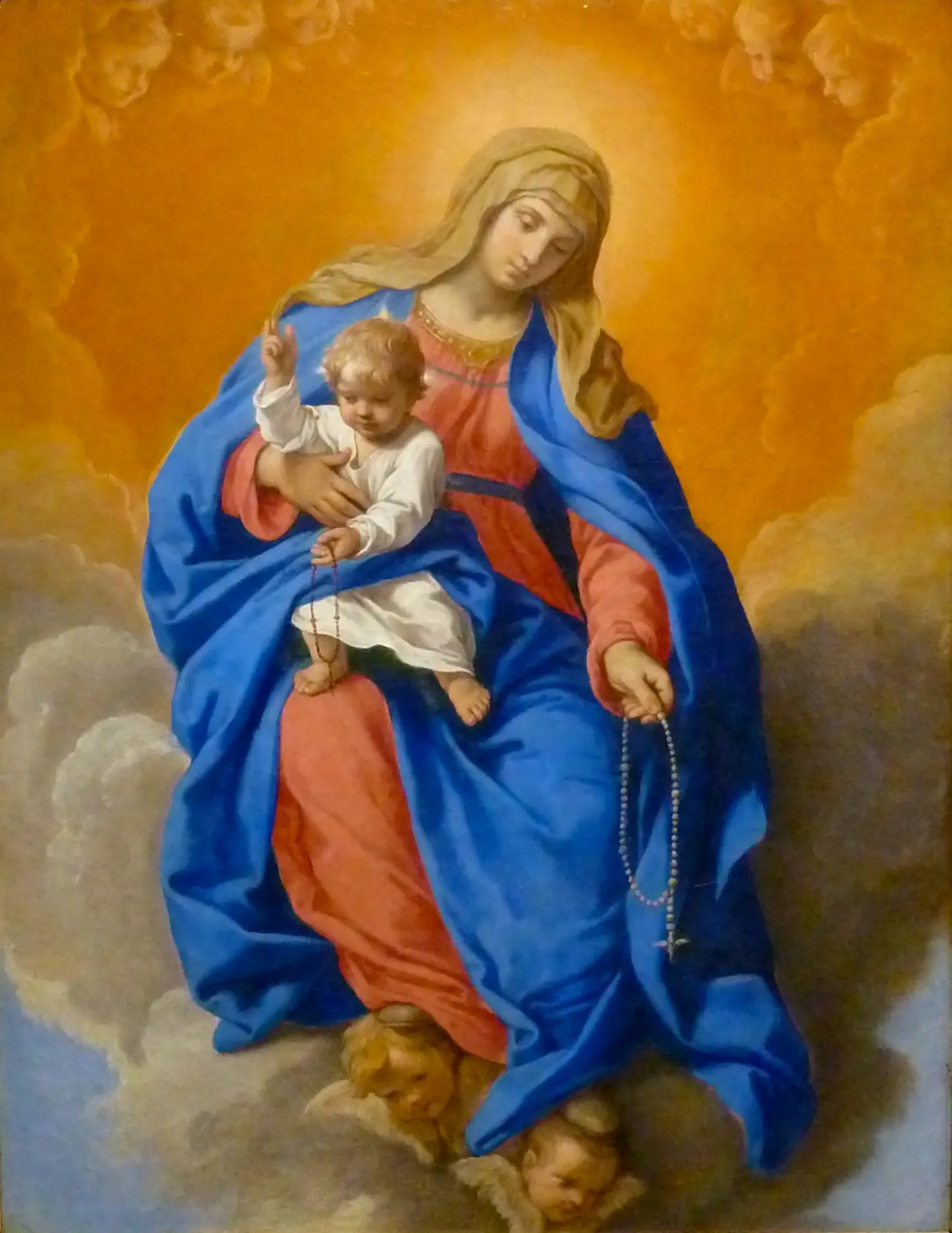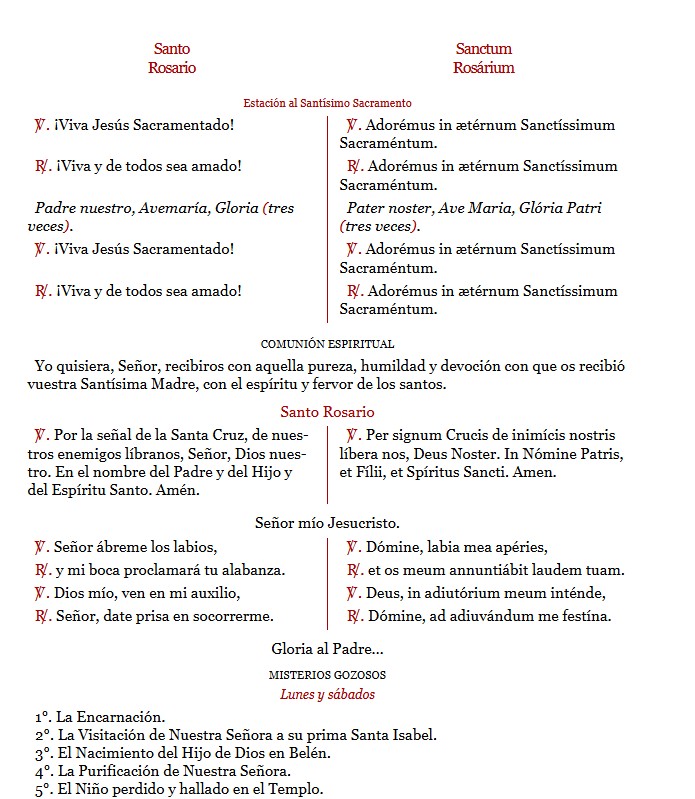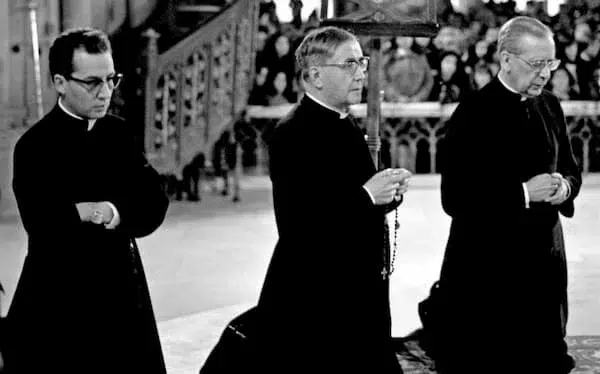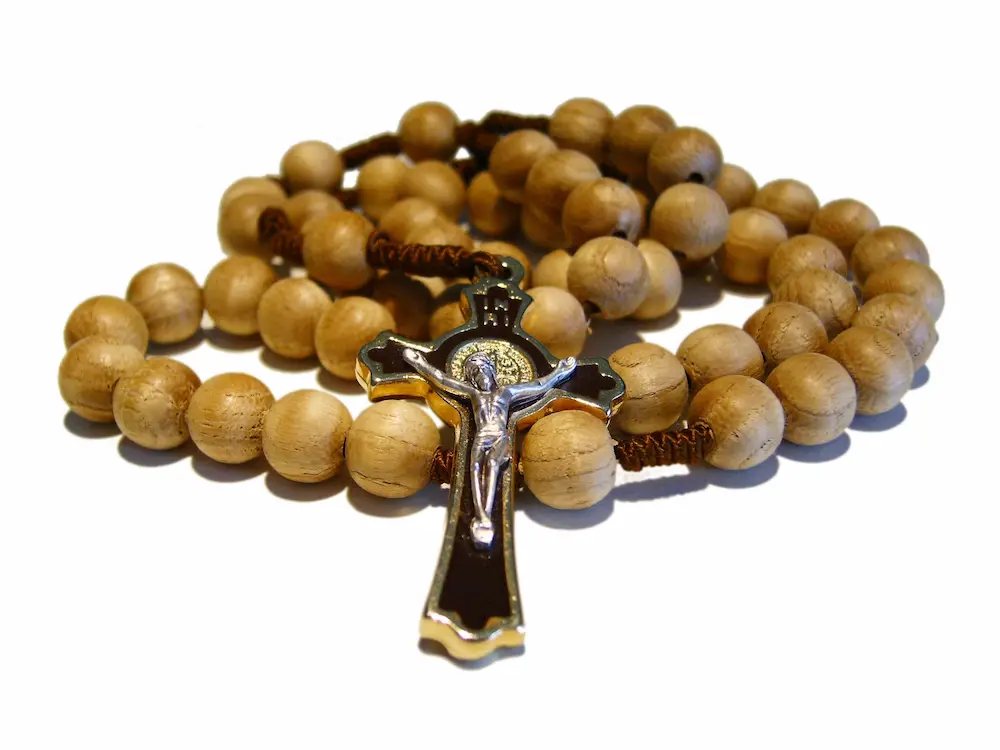
During the month of October we put special care in the recitation of the Holy Rosary. The October 7 we celebrate Our Lady of the Rosary. This powerful weapon, as St. Josemaría called it, bears many fruits of conversion and peace. "The Holy Rosary is a powerful weapon. Use it with confidence and you will marvel at the result" (The Way, 558).
Contemplation of the mysteries of the life of Jesus, through the four parts of the Rosary, brings us closer to Our Lord and, through the intercession of Our Mother, to all those who need us. Always include in your petitions seminarians, diocesan priests and religious that they may be very holy.
This month, the Church invites us to take the Rosary beads and contemplate the mysteries of our faith with the best of guides: our Mother.
The recitation of the holy Rosary took a long time to take shape as we know it today. It was not devised at a specific moment in time, but was is the result of a long evolution. It all probably started in the tenth century. In the year 910, Saint Benedict founded the Cluniac Order. She attached great importance to communal choral prayer. He wanted his abbeys to be a foretaste of the heavenly Jerusalem, where saints and angels are continually singing praises to God and interceding for all human beings (cf. Rev 5:9; 14:3; 15:3).
It is estimated that the origin of the Rosary goes back to the birth of the Hail Mary in the 9th century, as a prayer to honor Mary, the Mother of God, and that the Rosary originated in the order of St. Benedict and spread through the action of the Dominicans.
The devotion to the Holy Rosary has deep roots in the history of the Church. The feast of Our Lady of the Rosary, celebrated every October 7, was instituted by Pope St. Pius V to commemorate the victory of the Christian fleet at the Battle of Lepanto in 1571. A victory directly attributed to the intercession of the Virgin Mary, invoked through the massive recitation of the Rosary throughout Christendom.
In Lourdes, Fatima and many other apparitions of Our Mother. The Virgin Mary has always urged us to pray the Rosary uninterruptedly: for the conversion of sinners, for the end of evil in the world, etc.
But beyond its historical context, the Rosary is a school of prayer. It is not a simple repetition of Hail Marys, but a path of contemplation. At pray the RosaryWe can walk with Mary through the most significant moments of Jesus' life: the joyful, luminous, sorrowful and glorious mysteries. As St. Josemaría would say, the Rosary is "the prayer of the simple and the wise.
It is a constant dialogue, a "coming and going" of affections between a son and his mother, where we tell her our joys, sorrows and longings, while she takes us by the hand towards Jesus.
If you don't know how to do it, you can follow these steps to pray the Rosary to Our Mother the Virgin Mary.
The Rosary may begin with the recitation of the Station to the Blessed Sacrament concluded with Spiritual Communion.
From there, we make the sign of the cross (different from making the sign of the cross -santifixion- because there are three crosses on the forehead, the mouth and the chest).
Subsequently, the first of the five mysteries to be contemplated that day is announced. On Mondays and Saturdays, the joyful mysteries are contemplated; on Tuesdays and Fridays, the sorrowful mysteries; on Thursdays, the luminous mysteries; and on Wednesdays and Sundays, the glorious mysteries.
Each mystery is composed of an Our Father, ten Hail Marys and a Glory Be. After each mystery, we repeat: "Mary, Mother of Grace, Mother of mercy, defend us from our enemies and protect us now and at the hour of our death. Amen.
At the end of the five mysteries, the five mysteries of the day are prayed:
After the three Hail Marys, we begin the prayers of praise of the Litany of Our Lady of Laurel. After them, we recite one of the most ancient prayers to Our Mother: "Under your protection we take refuge, Holy Mother of God: do not despise the supplications that we address to you in our needs, but rather, always deliver us from all dangers, glorious and blessed Virgin". And the Rosary ends asking for:
Many people like to end with the Salve to the Virgin. According to the traditions of different places, to this structure for praying the Rosary are added some ejaculatories and prayers that express the variety of popular piety.

To understand this devotion, there are eloquent examples such as St. Josemaría Escrivá. His love for the Virgin was the driving force of his spiritual life and the Rosary was a fundamental part of his daily conversation with her. He did not see it as a pious obligation, but as a necessity of the heart.
In his book Holy Rosarywhich is not a theological treatise but a collection of contemplations written in a running order, St. Josemaría invites us to "immerse ourselves" in each scene of the Gospel. At pray the RosaryWe are not mere spectators; we are another character: the child who smiles at Jesus in the manger, the disciple who accompanies Christ in his pain, the friend who rejoices in his Resurrection.

St. Josemaría called the rosary a "powerful weapon. With it, he said, we win the battles of the soul and the conversion of souls. This weapon is not of violence, but of love and trust. It is the weapon of perseverance, of inner peace and of the strength to face the difficulties of daily life, sanctifying work and ordinary duties. This vision converts the act of pray the rosary in a tool for the service to the Church from our own vocation.
To make of October, month of the RosaryIt is easier than it seems to make it a permanent habit in our lives. St. Josemaría teaches us that there is no need for extraordinary circumstances. We can pray it in the car, walking down the street, in a moment of rest at work, or, best of all, in the family. The family that prays together stays together, and the Rosary is the bond that unites the hearts of parents and children to the Immaculate Heart of our Mother Mary.
This profound love for the Virgin must be very special in the life of priests. A priest is first and foremost a alter ChristusAnd who better than Mary to form the heart of a priest in the image of her Son? She formed him in her womb, educated him in Nazareth and accompanied him to the Cross. For this reason, the rosary is an essential prayer for every seminarian and priest. It strengthens his priestly identity and unites him to the Mother of the High Priest. Supporting the formation of priests is to ensure that the Church has shepherds with a Marian heart.
The Virgin Mary is, as the Catechism of the Catholic Church defines her, the perfect pray-er, the figure of the Church. To go to her through the Rosary is to learn to pray as she did: with humility, faith and total surrender to the will of God.

What October, month of the RosaryLet it become not just a claim in the customs of the Catholic Church, but a lived reality. Inspired by the example of saints like St. Josemaría, let us take up our Rosary beads with enthusiasm. Let us make this prayer a daily appointment of love with our Mother. As Pope Francis has reminded us on many occasions, the Rosary is the prayer that always accompanies his life, the prayer of his heart. Pope Leo XIV has asked us to pray the Rosary in this month of October, especially for peace in Gaza and Ukraine and throughout the world.
Let us entrust to Our Lady our intentions, the needs of the world and, in a special way, let us pray for the holiness and perseverance of priests. We will discover that pray the rosary not only brings us peace, but makes us courageous apostles, capable of bringing the joy of the Gospel to every corner of the world. Because an authentic love for the Virgin always leads to a greater and more committed love for her Son and for the Church. Marian devotion, as the lives of so many saints teach us, is a pillar in the life of every Christian, a sure anchor that we can find in the example of Mary as a model for Christians.